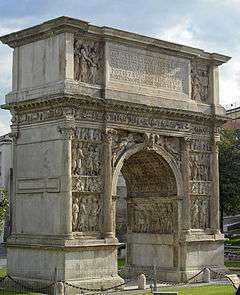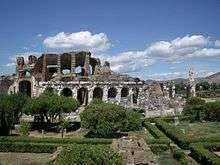Bourbon Tunnel
The Bourbon Tunnel, Tunnel Borbonico or Bourbon Gallery is an ancient underground passage, constructed for military purposes to connect the Royal Palace to military barracks in Naples, Italy.
History
The monarchy in the era of King Ferdinand II of Bourbon was fearful of the revolution-prone populace of Naples. Errico Alvino was commissioned to construct a military passage for troops connecting the Royal Palace of Naples to Via Morelli, boring underneath the hill of Pizzofalcone and reaching the quartiere San Ferdinando, but also connecting to other underground tunnels and aqueducts, including the old Carmignano aqueduct (1627–1629). The monarchy would also not have been ignorant that the Viceroy of Naples in 1647 had nearly been trapped in this urban Royal Palace, and only by luck was able to flee to a nearby Convent to escape angry crowds during the Revolt of Masaniello, thus the tunnel could also serve as an escape route for its royal inhabitants.
Two years after it was begun, the fall of the Bourbon dynasty led construction to halt. During the Second World War, the tunnel was used as a shelter during bombardments. Presently the tunnels are open for tours, and share with Catacombs of Naples the urge to go underground, and with much of Neapolitan constructions, a kinship with decay and fruitless architecture in Naples. The tunnel contains decades of debris, including vintage cars and a discarded fascist monument that had been made for Aurelio Padovani.[1][2]
Coordinates: 40°50′07″N 14°14′47″E / 40.835400°N 14.24629°E
References
- ↑ Ewles-Bergeron, Penny (February 13, 2012). "The Bourbon Tunnel". Napoli Unplugged. Retrieved December 14, 2014.
- ↑ "Napoli, le statue fasciste ritrovate Ecco com'era il «Colosso di Chiaia»". Il Mattino. March 14, 2010. Retrieved December 14, 2014.


